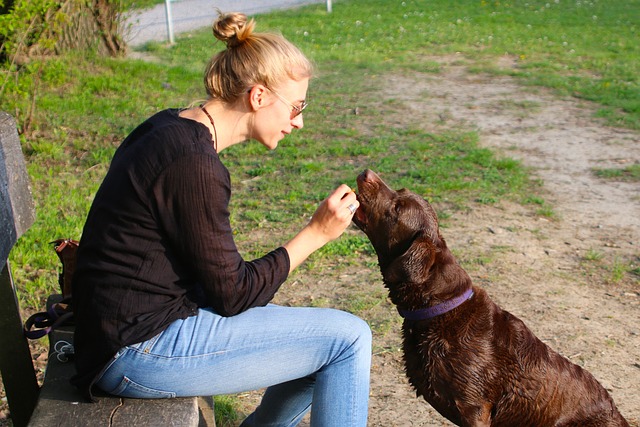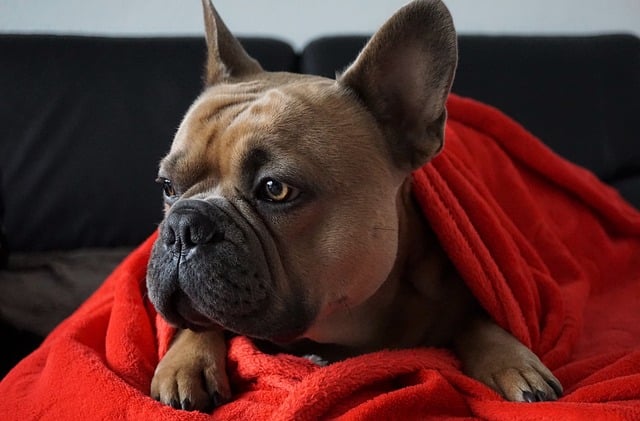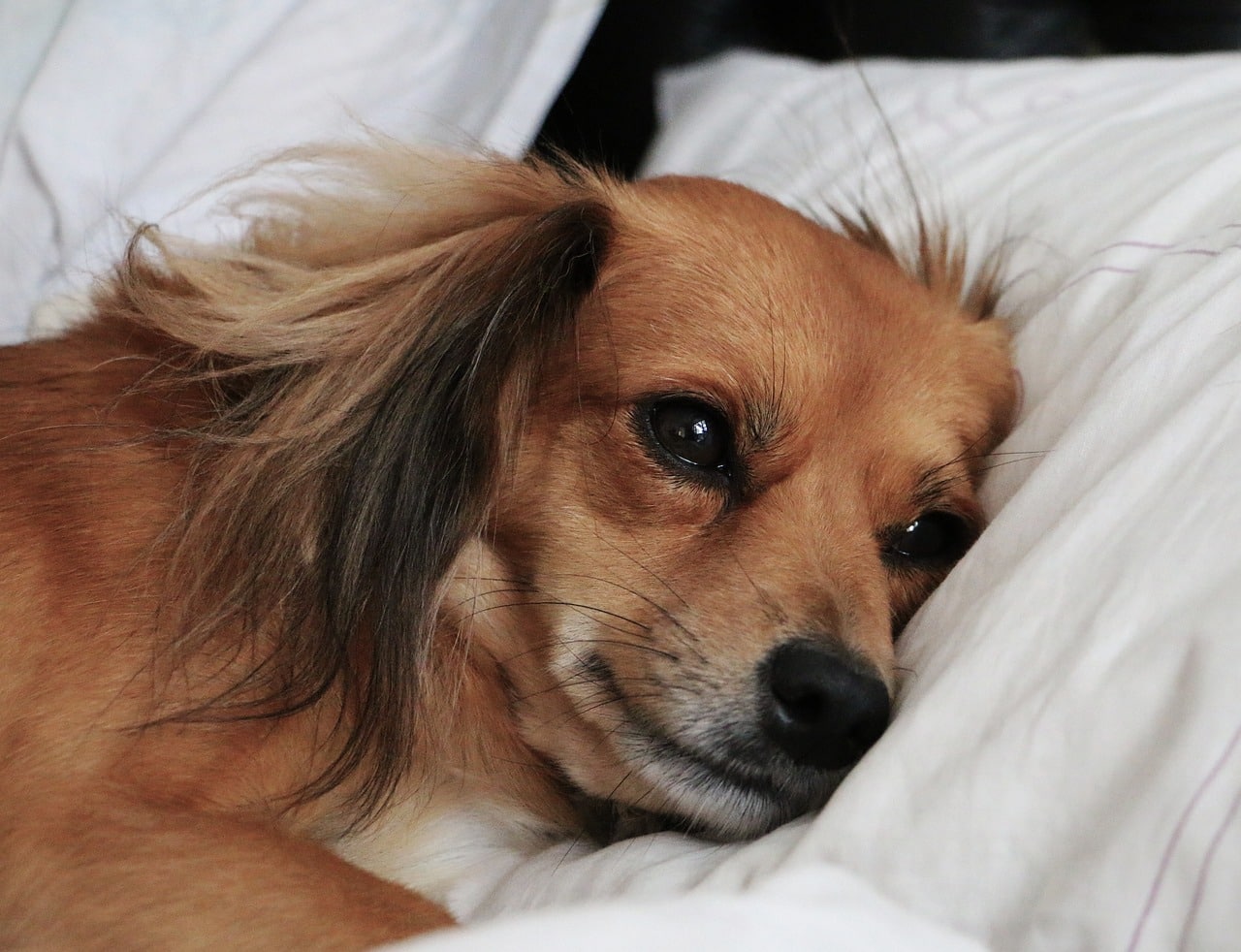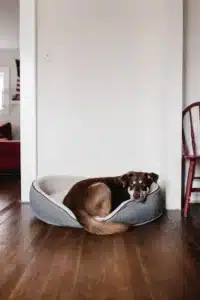“How to keep your dog off of the couch?” is a common question among pet owners asked online who are seeking effective strategies to discourage their furry companions from jumping on the furniture. Are you tired of seeing your furry friend lounging on your couch, leaving behind unwanted fur and odor?
It can be tough putting an end to this unwanted behavior, but with a little bit of consistency and some helpful tips, it will be easier keeping dogs off the couch and maintain a cleaner, more odor-free space. In this blog post, we’ll explore some effective ways to stop your dog from hogging your couch and leave you with a clean and dog-free living area.
Provide Your Dog With Their Own Cozy Bed
If your dog loves to sprawl out and relax, it might be because they haven’t been given their own comfortable dog bed. Invest in a cozy and well-cushioned dog bed and place it in a convenient location where your dog likes to lounge. This will provide them with their own space to relax and sleep, which will make it less likely for them to occupy the room on your couch. Dog beds can be purchased online or in pet store.
Train Your Dog to Stay Off of the Couch
Training your dog is an effective way to teach them new behaviors. If your dog has been used to jumping on your couch, then you need to train them to stay off it. Whenever you see your dog jumping and you find them on the couch, use a clear “off” command and gently guide them off the couch.
If that doesn’t seem help, you can also use dog deterrent sprays that can be found at pet stores. Be consistent with this training and reward them when they obey the “off” command.
Use Positive Reinforcement

Encourage your dog to use their own bed by using positive reinforcement. Reward them for using their bed instead of the couch. Use treats, praise, and positive reinforcement to encourage good behavior. if you are crate training them instead of them being on the couch. Your dog will soon understand that their bed/crate is the best place for them to relax.
Create a Designated Play Area
Your dog could be occupying your couch because they are bored and have nothing else to do. A designated play area for your dog can encourage them to spend their time playing and not lounging on the couch.
Create an area with their favorite toys, puzzles, and chew toys. Baby gates are helpful in creating a physical barrier. This will keep them occupied and keep dogs off furniture entertained, leaving your couch dog-free.
Cover Your Couch
Lastly, if all else fails, you can always cover your couch. If your dog is allowed on the couch at times, you might want to protect it from unwanted pet hair and dirt. A washable cover will keep your couch clean and will be easy to remove and clean.

Is It Bad for Your Dog to Be on the Couch?
If you are a dog owner, you must have heard about the debate over whether or not dogs should be allowed on the couch. While some people may be comfortable with their furry friend sharing the sofa, others may be skeptical due to hygiene concerns or behavioral issues.
This discussion is often a topic of controversy amongst pet owners, but is there really a definitive answer to the question of whether or not your dog should be on the couch? Keep reading as we will explore both sides of the argument to help you make an informed decision about whether or not to let your dog on the couch.
Hygiene Concerns
One of the biggest arguments against allowing your dog on the couch is hygiene concerns. As dogs spend most of their time outdoors, they may carry dirt, mud, and bacteria on their paws and coat. This can pose a health risk for both the humans and pets sharing the couch, especially if the dog is not properly groomed.
Additionally, dogs may shed their fur, and this can cause allergens to circulate in the air, causing allergies. To avert this, you can train your pet to take frequent baths, keep them clean and adequately groomed, and use a vacuum cleaner to clean the couch often to get rid of any dirt or allergens.
Bonding
For many pet owners, having their furry friend cuddled up next to them on the couch is a special bonding experience. Dogs are social creatures, and they enjoy being close to their owners as much as possible. Allowing your dog on the couch may be an easy way to strengthen the bond between you and your furry friend.
Furthermore, having your dog close to you can help reduce stress and anxiety for both the pet and the owner. However, healthy boundaries should be established to ensure that the dog doesn’t become overly dependent on accessing the couch.
Behavioral Issues
Some argue that allowing your dog on the couch may encourage your dog’s behavior. For instance, if the dog gets used to hopping onto the couch whenever they feel like it, they might become territorial and develop behavioral issues like resource guarding. Resource guarding is a term used to describe dogs that fiercely protect what they believe is theirs, like furniture.
However, this issue can be addressed by training your dog to understand that the couch is not theirs but a shared item in the house. This training can be achieved by setting a specific spot on the couch for the dog, putting out its bedding and teaching them to obey commands to stay off the sofa.
Health Concerns
Lastly, allowing your dog on the couch may be risky to their health. This is particularly true if the dog is a puppy, a senior dog or has a health issue. Puppies and senior dogs may not have the strength or ability to jump on to or off the couch, so when your dog jumps, this can result in injury.
Furthermore, if the dog has joint pain, jumping on and off furniture can cause pain and discomfort, which can worsen the condition. In such cases, it is recommended to keep your dog off the couch until its health improves. Once it’s healthy, you can train your pet to use puppy stairs or ramps to get on and off the couch alternatively.
In conclusion, there is no black and white answer to the question of whether or not your dog should be on the couch. While there are valid arguments on both sides of the debate, the decision ultimately comes down to the individual dog owner. What may work for you and your pet may not be the best decision for someone else and their pet.
However, by taking steps to maintain hygiene, put healthy boundaries in place, and address any behavioral or health concerns, you can ensure that sharing the couch with your furry friend is a positive and rewarding experience for both you and your pet.

Tips and Tricks on How to Get Dog Hair and Urine off the Couch
It’s quite common to have dogs as pets, but unfortunately, pets also come with their fair share of messes. One of the most frustrating messes for pet owners is when they find dog hair and urine on their couch.
Dogs love to jump onto furniture and sofas, which makes it important for dog owners to know how to clean the couch effectively. The post below addresses some tips and tricks on how to get dog hair and urine off the couch.
Start by Vacuuming
The first step in cleaning your couch is by vacuuming it thoroughly. This helps to remove any loose dog hair that is sitting on the surface of the couch. Vacuuming ensures that you have a clean surface to work with, and it also helps to loosen up any trapped dog hair in the fibers of the sofa. Make sure you use a vacuum cleaner that has a good filter to trap all the dust, hair, and other particles.
Use a Pet-friendly Cleaning Solution
Once you’ve gotten rid of all the loose hair on the couch, it’s time to deal with the urine stains. Dog urine is acidic, which can result in unpleasant smells, yellow stains, and can even damage the couch fabric.
Choose a pet-friendly cleaning solution that is safe for both your couch fabric and your dog. A mixture of warm water, vinegar, and baking soda is a common DIY cleaning solution to use. You can also purchase high-quality pet urine removers from your local pet stores.
Test Your Cleaning Solution First
Before you start using any cleaning solutions on your couch, always make sure to test it first on a small patch of fabric that is inconspicuous. This helps to ensure that the solution doesn’t damage your couch fabric. Once you’re confident that the solution is safe to use, apply it to the urine stains on the couch. Use a soft-bristled brush or a clean towel to rub the solution gently on the stains.
Dry the Couch Thoroughly
After cleaning the couch, don’t immediately sit on it. Let the couch dry thoroughly before using it again. You can use a fan or an open window to help the couch dry faster. Also, avoid using a blow dryer as it can damage the fabric. If you’re cleaning a leather couch, you can use leather conditioner once the couch has dried, so it remains soft and supple.
Cleaning dog hair and urine off the couch is not a task that anyone looks forward to, but it’s something that pet owners need to deal with.
Vacuuming the couch, using pet-friendly cleaning solutions, testing the solutions first, drying the couch thoroughly, and taking some preventive measures, all help to keep your couch looking and smelling fresh. These tips and tricks will help you deal with the mess efficiently and quickly, giving you peace of mind that your couch is clean and odor-free.

In conclusion, keeping your pooch off the couch isn’t an impossible feat. With some persistence, patience, and a few helpful tips, you can create a comfortable and clean-living area for you and your furry friend.
Always treat your dog with care, patience, and respect, and remember that training takes time and effort. Before you know it, your dog will be spending more time on their own bed, making your living area cleaner and more relaxing.
Ruff House Dog Training
If these methods fail to give you the outcome you want, it’s a good idea to contact a professional dog trainer to further help your furry friend. Ruff House Dog Training uses positive reinforcement methods to train your dog and we will show you how to keep the training going even after getting home.












